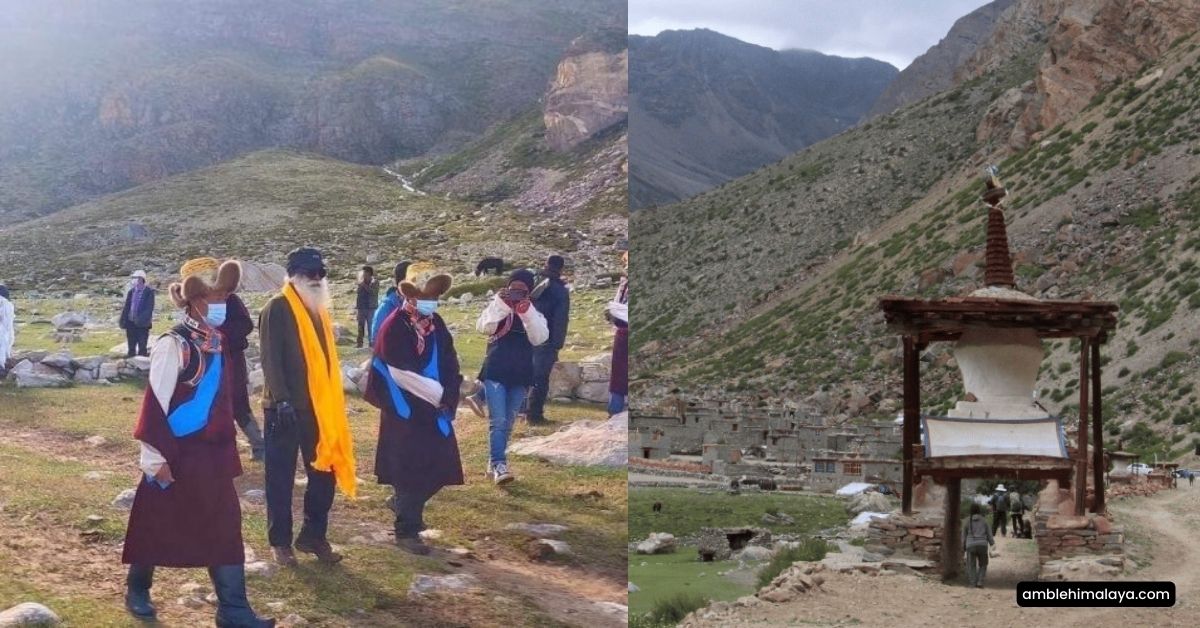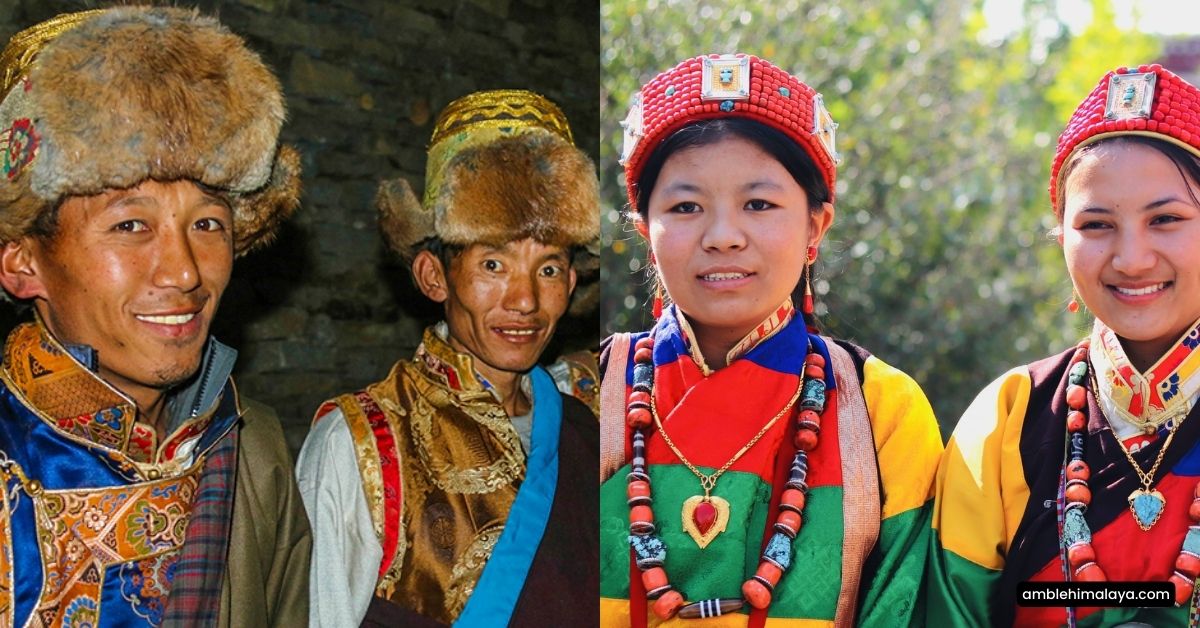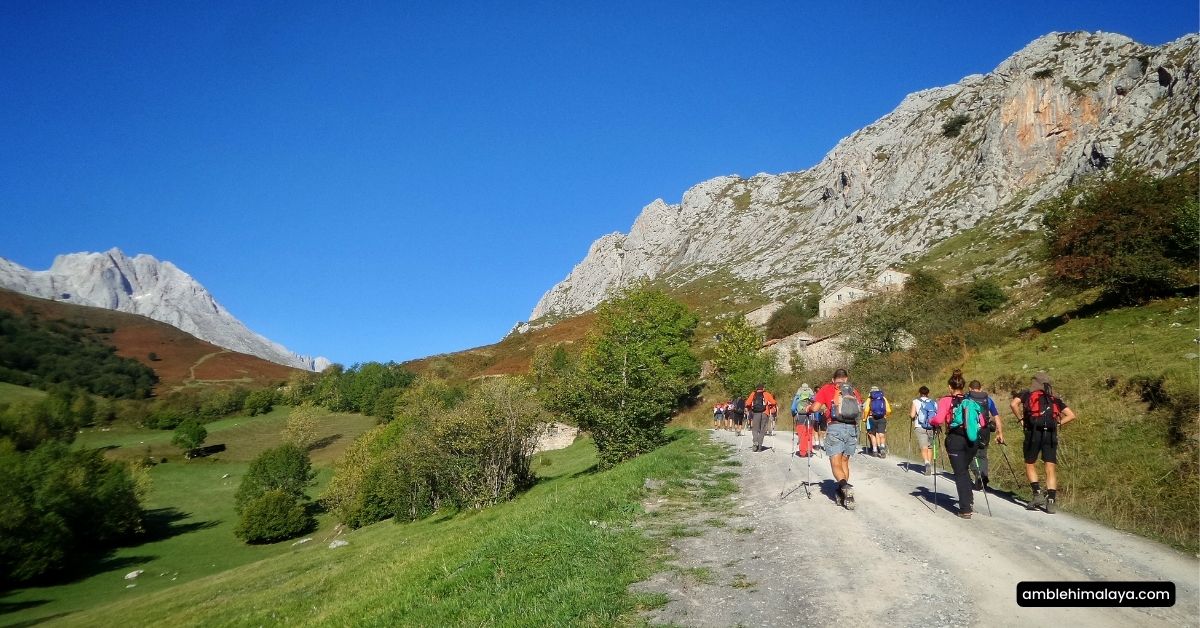The Limi Valley Trekking is a journey through one of Nepal’s most remote & untouched regions. Located in the northwest corner of the country, close to the Tibetan border, this trek follows the old salt trading & pilgrimage route through the district of Humla. The area is virtually untouched, having only opened to trekkers in 2002, making it one of Nepal’s least frequent treks.
The Limi Valley Trek offers an unforgettable opportunity to explore a region that has remained unchanged for centuries. The trek takes you through stunning mountain scenery, past ancient monasteries & remote villages where local people still follow traditional ways. The trek is challenging, but the rewards are immense.
Getting Prepared for the Trek
Before venturing into the Limi Valley, adequate preparation is vital to ensure a safe & enjoyable journey. As this trek demands physical endurance, hikers should engage in regular fitness training, including cardiovascular exercises & strength building. Long days of walking on rugged terrain require stamina & resilience.
Additionally, obtaining the necessary permits, such as the Restricted Area Permit & the TIMS card, is mandatory for entering the region. These permits help regulate the number of trekkers & conserve the natural & cultural heritage of the area. Travelers should carefully plan their trips during spring & autumn to avoid harsh weather conditions.
Packing the right essentials is crucial for a successful trek. Lightweight yet durable gear, warm clothing, sturdy hiking boots, & a comfortable backpack are some of the essentials to look into. It is also advisable to pack some high-energy snacks & water purification tablets to stay energized & hydrated during the trek.
Starting the Trek
The journey begins with arrival in Kathmandu, Nepal’s vibrant capital city. After soaking in the local culture & finalizing permits, a scenic flight takes trekkers to Nepalgunj, a town in the southwestern Terai region. From here, another short but exhilarating flight leads to Simikot, the gateway to Limi Valley.
Simikot is the starting point of the trek. From here, trekkers follow the Karnali River, trekking through ancient trails that meander through the pristine wilderness of the valley. The trek offers captivating views of the surrounding landscapes, with snow-capped peaks, lush forests, & traditional mud-brick villages along the way.
Exploring the Lower Limi Valley
The Lower Limi Valley is a treasure trove of natural beauty & cultural heritage. The region is dotted with ancient monasteries, stupas, & prayer flags, reflecting Buddhist influence. The locals’ warmth & hospitality add to the charm of this off-the-beaten-path destination.
As travelers meander through quaint villages, they are often welcomed with traditional ceremonies, showcasing the rich cultural tapestry of the region. Engaging with the local communities & learning about their way of life offers a rare insight into the age-old traditions of the Himalayan people.
The Lower Limi Valley is also renowned for its stunning landscapes. The trail takes trekkers through lush forests, alpine meadows, & cascading waterfalls. Along the way, the majestic Karnali River accompanies the trekkers, adding to the picturesque setting.
Trekking Through Remote Landscapes
As the journey progresses, trekkers must navigate challenging terrains & cross the formidable Nyalu La Pass. The crossing offers breathtaking views of snow-capped peaks & dramatic valleys. The rugged landscapes starkly contrast the peaceful villages below, reminding adventurers of nature’s raw & untamed beauty.
Nyalu Lagna Pass, at 4,800 meters, demands physical endurance & acclimatization. The ascent to the pass is challenging but rewarding, as trekkers enjoy panoramic vistas of the surrounding Himalayan ranges.
Its isolation & pristine nature characterizes the Limi Valley region. Unlike popular trekking routes, Limi Valley offers an opportunity to connect with nature in its rawest form. The burstiness of nature, with its varying landscapes & weather patterns, keeps trekkers engaged & curious throughout their journey.
Upper Limi Valley Experience
The Upper Limi Valley is a sanctuary for Tibetan culture, isolated from the modern world. Here, ancient traditions & practices have been preserved for centuries, creating a spiritual haven for those seeking a deeper connection.
Halji & Til are among the Upper Limi Valley highlights. The ancient monasteries in these villages are architectural marvels adorned with intricate murals & statues. Trekkers are often invited to participate in Buddhist rituals & prayers, allowing them to immerse themselves in the region’s spirituality.
In addition to cultural experiences, trekkers can enjoy the stunning beauty of the Tibetan plateau. The vastness & serenity of the landscape is unlike anything else, providing tranquility & reflection.
Location & Geography
Limi Valley is located in Nepal’s Humla district, northwest of the country. The trek runs close to the Tibetan border, following the old salt trading & pilgrimage route. The region is characterized by its rugged, mountainous terrain, with towering peaks, deep valleys, & rushing rivers.
Limi Valley is situated at an altitude of 4,000 meters above sea level. The valley is surrounded by high mountains, including Mount Kailash (6,638 meters), which is considered sacred by Hindus, Buddhists, Jains, & Bonpo. The valley is fed by several rivers, including the Karnali River, which flows through the region.
History & Culture

The Limi Valley inhabitants are mostly Tibetan, & Tibetan Buddhism is better preserved here than in Tibet. The ancient monasteries along the route testify to this. One notable fact about the local inhabitants is that polyandry (wives with multiple husbands) is very common. This practice is found in less than one percent of societies but is common in Limi Valley, accounting for 44 percent of marriages in 1995.
The Limi Valley has a rich history & culture shaped by its location at the crossroads of several ancient trade routes. The valley was once a significant stop on the salt trade route between Tibet & India. It is also a popular pilgrimage destination for Buddhists from both countries.
Route
The Limi Valley Trek follows the old salt trading & pilgrimage route through Humla. The trek begins at Hilsa, near the Tibet border, & follows the Karnali River through small villages before reaching the Limi Valley.
The route takes you through some of Nepal’s most remote & untouched regions. You will pass through deep gorges & over high mountain passes as you head toward the Limi Valley. Along the way, you will visit ancient monasteries & remote villages where time seems to stand still.
Duration
The trek takes approximately 20 days to complete. Trekking generally begins around 8 am, and you trek for five or six hours daily. The exact duration of the trek will depend on several factors, including your fitness level & how much time you want to spend exploring the region. It is possible to complete the trek in less time if you are fit & experienced. However, most people prefer to take their time & enjoy all that this fantastic region offers.
Difficulty
Taking part in the Limi Valley Trek is moderate to strenuous, so good fitness is necessary. Paths often become narrow & rocky, and you’ll need trekking poles.
The trek involves several long days of walking over rough terrain at a high altitude. You will need to be physically fit & well-prepared to complete this challenging trek. Acclimatizing properly before starting the trek is important to avoid altitude sickness.
Accommodation
Accommodation on the Limi Valley Trek is a mix of small authentic villages & camps beneath the snow-capped mountains. There are no hotels or guesthouses along the route, so you will need to camp or stay in basic lodges or teahouses. These accommodations are often very basic but provide a warm place to sleep & a chance to experience local hospitality.
Wildlife & Flora
The Limi Valley is home to a rich variety of wildlife & plants. Exotic animals such as Himalayan bears, wild horses, blue sheep, musk deer, mountain eagles, & many more can be found in the region. You may even see a snow leopard if you’re lucky!
In addition to its rich wildlife, the Limi Valley also boasts a diverse flora. The region is home to many wildflower species that bloom during springtime filling up the meadows with vibrant colors.
Best Time to Visit
The most suitable time to undertake this trek is in the summer, between March-September and October. Limi Valley is in a rain shadow area – blocked from the majority of monsoon rain by the high mountains – so trekking is possible even during the monsoon season from June to August.
The weather in the Limi Valley can be unpredictable, so it is imperative to be prepared for all eventualities. It is an excellent idea to bring warm clothing & waterproof gear, even if you are trekking during the summer months.
Best Trekking Routes in Nepal in May/June
May/June is Nepal’s rainy season. If you want to trek this season, choose rain shadow areas such as Upper Mustang (behind Annapurna), Upper or Lower Dolpo (behind Dhaulagiri), & Humla Limi Valley in the far west. All these places receive little or no rain.
However, short treks like Ghorepani Poonhill, Annapurna Base Camp, Mardi Himal, etc. Are always possible.
Preparation & Equipment
Being very remote, there are very few tourists on the Limi Valley Trek. It is important to note that individual travelers are not allowed on this trek – you must join an organized group. A good level of fitness is necessary for this moderately strenuous trek.
You will need to bring all of the usual trekking gear, including a good-quality backpack, sturdy hiking boots, warm clothing, & waterproof gear. It is also an excellent idea to bring a first aid kit & any personal medications that you may need.
Local Customs & Etiquette

Limi Valley inhabitants are mostly Tibetan & follow Tibetan customs & traditions. It is essential to respect local customs when visiting this region.
When visiting monasteries or other religious sites, it is essential to dress modestly & remove your shoes before entering. It is also customary to walk around stupas & other religious objects clockwise.
Spiritual Encounters
As trekkers approach the Tibet border, Mount Kailash looms in the distance. Revered by Hindus, Buddhists, & Jains alike, this sacred mountain holds profound spiritual significance. Some travelers might choose to embark on a pilgrimage to Mount Kailash, a transformative journey that transcends earthly boundaries.
Throughout the trek, pilgrims engage in spiritual practices, such as prostrating themselves at sacred sites & turning prayer wheels. This fosters a sense of tranquility & introspection.
The Limi Valley trekking offers an exceptional opportunity for spiritual exploration with its tranquil surroundings & ancient cultural heritage. The connection with nature & the simplicity of life in the valley encourages contemplation & self-discovery.
Crossing the Border
The Nepal-Tibet border crossing is an unforgettable experience, as trekkers leave behind Nepal’s vibrant colors for the expansive Tibetan plateau. The crossing process requires proper documentation & adherence to customs regulations, but the reward is an immersion into Tibet.
Landscapes change dramatically, with vast grasslands, high-altitude deserts, & ancient monasteries dotting the horizon. The burstiness of the transition from the lush greenery of Nepal to the barren terrains of Tibet creates a sense of excitement & wonder.
Return Journey
As the trek nears its end, trekkers retrace their steps, savoring memories created along the way. The return journey provides an opportunity to bid farewell to the Lower Limi Valley & its hospitable residents.
The flight from Simikot to Nepalgunj marks the end of a wilderness adventure. Trekkers can reflect on the unique experiences & encounters that have enriched their spirits.
The return journey allows trekkers to revisit familiar landscapes, but the ever-changing Himalayan weather ensures that each day brings a new & surprising experience.
Conclusion
The Limi Valley Trekking offers an excellent opportunity to explore one of Nepal’s most remote & untouched regions. With its rugged mountainous terrain, rich wildlife, & fascinating culture, this trek is sure to be an unforgettable experience.
Frequently Asked Questions
How long does it take to complete Limi Valley Trek?
It takes around 20 days to complete Limi Valley Trek.
What kind of accommodation can I expect during Limi Valley Trek?
Accommodation during Limi Valley Trek includes small authentic villages as well as camps beneath snow-capped mountains.
What kind of wildlife can I expect to see during Limi Valley Trek?
You can expect to see exotic animals such as Himalayan bears, wild horses, blue sheep, musk deer, mountain eagles, etc.
When is the best time to visit Limi Valley?
The best time to visit Limi Valley would be between March-September & October.



